|
Blisworth Tunnel , Blisworth, Northamptonshire, UK. All pictures are presented at relatively low resolution.
There will be hundreds of pictures on this site - there is an economic limit to the
webspace available. The point of this presentation is that you
can see for yourself the extent of the collection and return
later as the collection expands - as it surely will. Any interest in copies of a picture
at a higher resolution (ie. clarity) should be directed
through contacts given in the Blisworth "Round and About"
parish council publication or using the comment form on the home page. In some cases the pictures are not available due to copyright restrictions.
However, permission has been obtained, where
possible, to include them here. Printed below each image is the
photographer's name, if known.
|
||
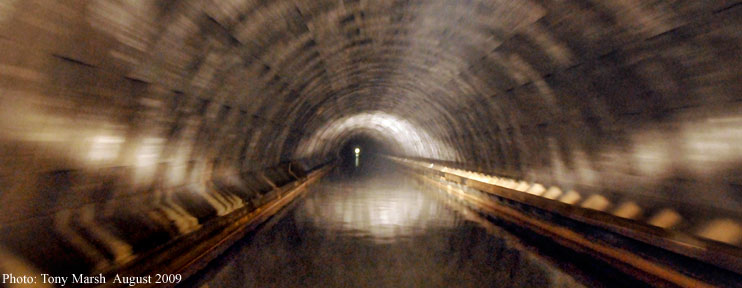 |
||
|
Link to the Northampton Branch of the Inland Waterways Association |
||
|
A revised Story of the c. 1800 Construction of Blisworth Tunnel |
||
|
This link takes you to a two page feature on the 1982 -1984 Tunnel repairs |
||
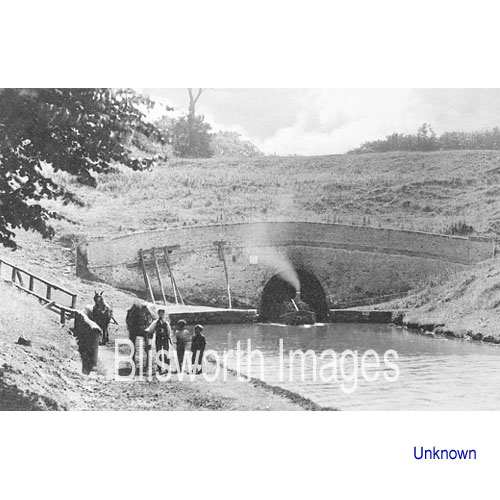 |
07-01 Pre-1903 as evidenced by the failing brickwork at the north portal. As shown by Millner's photos at BW Archives, the repair work was carried out between Dec 1902 and Oct 1903 by removing only the facing layer of bricks, building a new arch just in front and filling the space between with concrete. Note that the stable hut is absent in this photo circa 1900 but it is present in some of Millner's photos of 1903. It may be assumed that the stable building at the top of the path was taken down c 1903. |
|
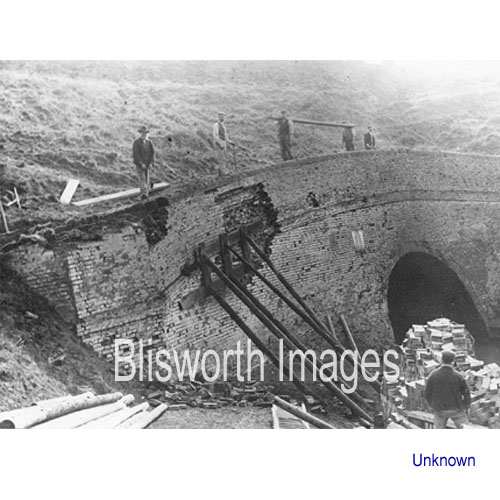 |
07-02 This picture shows the substantial backwards angle to which the brickwork of the portal was set. The same set was made at the South Portal - the brickwork is still in reasonable condition.
|
|
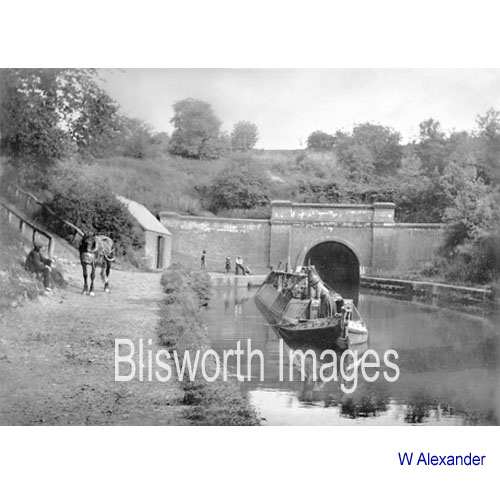 |
07-03 The special harness for the horse can just be made out. Date uncertain - the north portal re-built many years by this time. | |
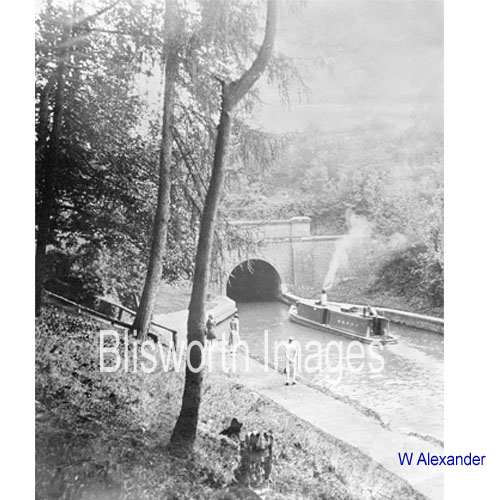 |
07-04 The boat is the steam tug
"Hasty" which was employed to pull a group of narrow
boats (08-09)
through the tunnel. At the end, the tug would turn and return with
a group of boats going in the opposite direction. This routine was
introduced after serious accidents and some loss of life, in Victorian
times, due to steam
boats meeting in the tunnel - see footnote below.
Tugs were in continuous use from 26 April 1871, when the members of the Leggers Fraternity were pensioned off, to 30 Sept 1936. A log for one typical week in 1928 is to be found here. |
|
|
Footnote: A serious accident in 1861 was followed by a ghost story that persists to this day. |
||
| 07-05 | ||
| 07-20 A team of tunnel workers photographed by the chief engineer Thomas Millner. Date 1910 | ||
|
07-21 Bricklayers team led by Frank Ratledge (in the centre) c. 1950.
|
||
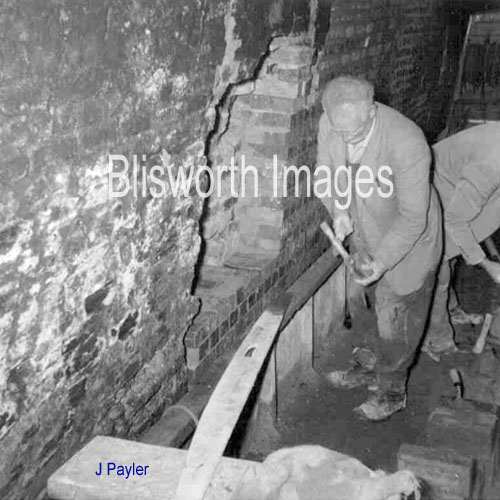 |
07-06 George Gunthorpe in Blisworth Tunnel (either 1960 or Oct/Nov 1965) - a bricklayer for British Waterways. The wall is specified as two brick lengths in thickness. He is standing in a boat as the work is above the water level. If repairs have to be done at a lower level the section of canal has to be pumped out between tight fitting wooden-framed stanks as shown in 07-07a below. | |
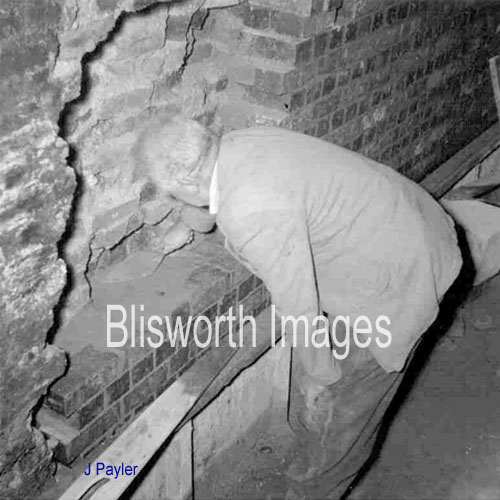 |
07-07 | |
| 07-22 Also dated circa 1960 - grout injection into cavities behind the brick wall through protruding pipes which can be seen towards the top of the picture. | ||
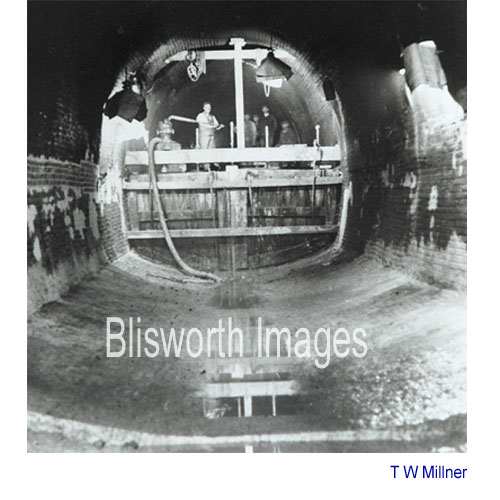 |
07-07a This was photographed in 1910, being one of the years in which a considerable amount of repair work was needed. The carefully fixed wooden barrier to retain canal water is called a stank. | |
| 07-21a An archival picture of the tunnel showing bulging sections. | ||
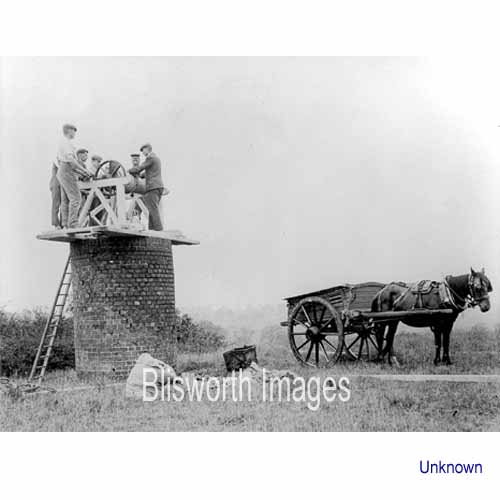 |
07-07b A common weakness of the tunnel's brick lining is the ventshafts and their junction with the tunnel. Shown here is an access from the top of the shaft using a gin wheel for lowering both materials and labourers. | |
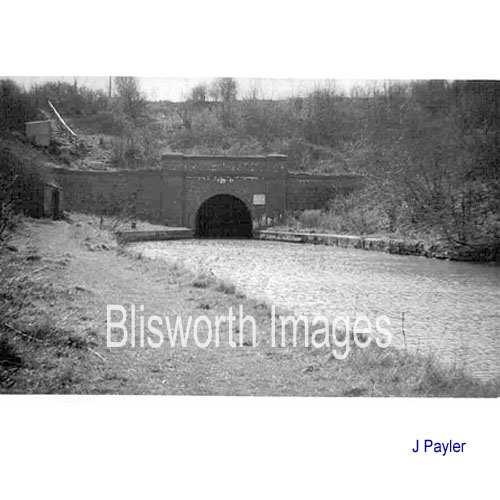 |
07-08 The extra railings and the small shed above the portal brickwork were there around 1948 - 53. The shed housed a pump to extract water from a spring and pump it to a holding tank by the rear of the new Connegar Leys development. The tank was set up on an angle iron frame and provided water in the early years until mains water was established in c. 1953/4.
|
|
|
Footnote: The Towcester Rural District Council also filled tanks set upon wagons to distribute water to village houses with a failed supply in the early 1950's - see the Miscellaneous section and the article on village sewers and water supplies. |
||
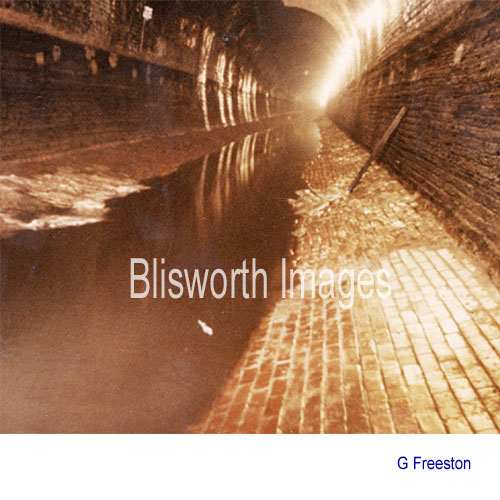 |
07-09 Taken in 1982 while the
tunnel was emptied for major repairs to a long section in the centre.
This became a road for trucks shifting materials and concrete
sections.
The subject of the 1982 - 1984 tunnel repairs is dealt with in more detail in separate feature pages. |
|
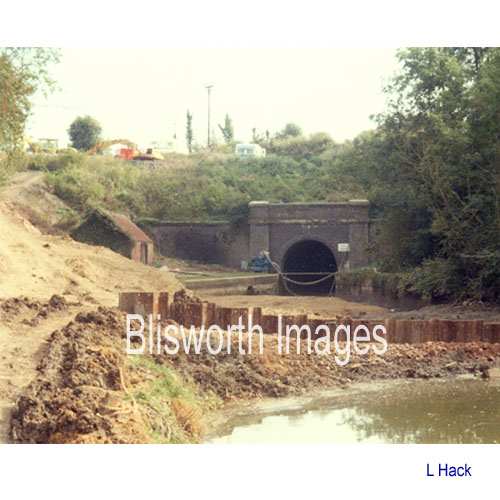 |
07-09a Once dry for the 1982 repairs, the canal tunnel was converted to a road tunnel and a ramp and turning area was established. Truck drivers had to become accustomed to reversing a distance of half a mile. | |
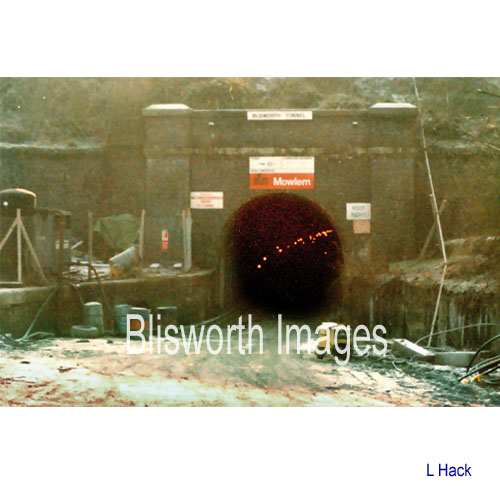 |
07-09b The whole length of the dry tunnel was lit by power from a temporary grid connection. Note that the row of lights appear to go upwards. This seems to be the effect of taking the photograph from a higher than usual viewpoint. | |
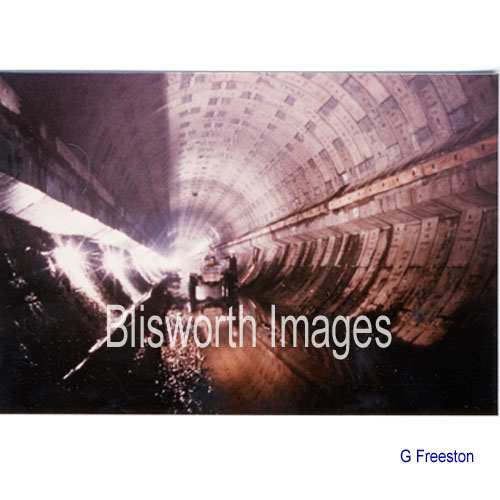 |
07-10 Date c. 1984 The appearance of the renewed section based on a circular profile. | |
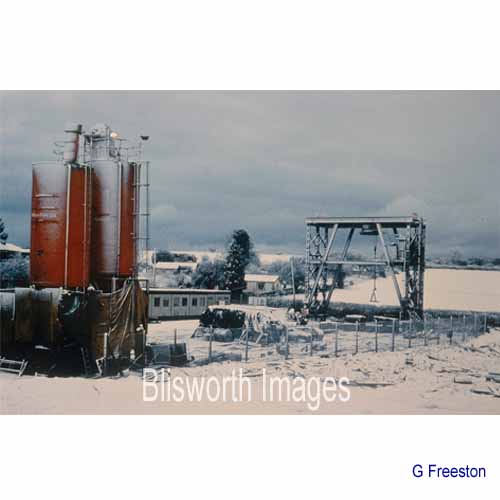 |
07-12a Pictured 1983/4 the substantial township which had grown in the field to the south of the tunnel entrance is enhanced with a snow dusting. | |
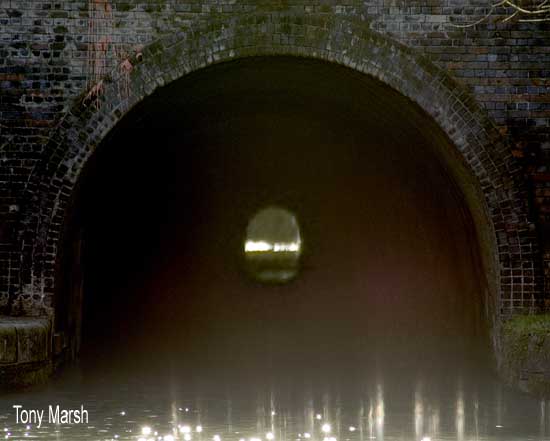 |
The tunnel at 3056 yards long is very nearly
dead straight and much credit must go to the Georgian engineers.
On clear days with low traffic, the other end can be easily seen from
the towpath at the Blisworth end. This is best in winter.
Use of binoculars is advisable. In this photo I have enlarged
the sight of the far end by 10 times to give an impression of a
tunnel only 305 yards long.
The tunnel actually "wriggles" by over 1 metre in and out
and something similar happens to the roof. The far end can be seen
only over a rather narrow range of positions. Start by standing,
with both feet on the brick wharf, near to the edge and work backwards,
away from the tunnel mouth, until you get to the end of the wharf. Now,
if you move, you can see the view being cut off because of the
non-straight sides. Hang on to kids doing this!! Photo: D70, 200mm, sunny day - exposure was +3 stops. |
|